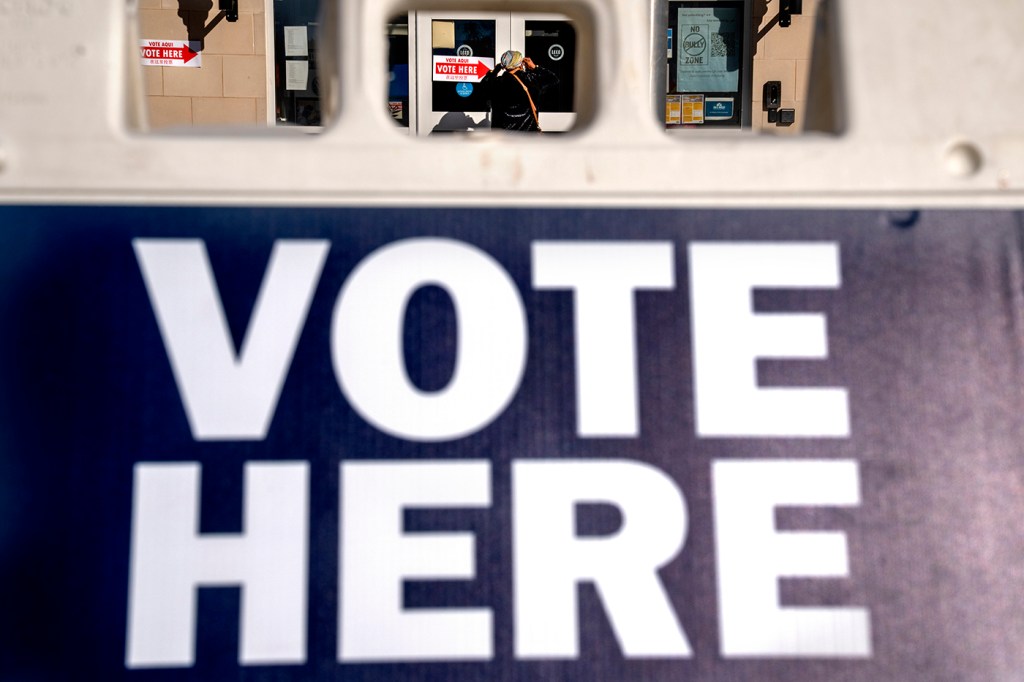Democrats defy ‘strong historical forces,’ but why was that surprising? Here are the key takeaways from Election Day

Surprise, surprise.
Amid endless talk of a “red” Republican wave months ahead of the 2022 midterm election, Democrats have not only closed the enthusiasm gap but appear poised to stave off a Republican majority in the U.S. Senate following a surprise performance by now U.S. Sen.-elect John Fetterman, a Democrat, in the key battleground state of Pennsylvania.

It’s still early days, but voters across the country woke up Wednesday morning to a radically different political outlook than the one foretold in the press. Fetterman’s flip, combined with a somewhat promising runoff in Georgia and confidence in Arizona has tightened the race for control of the U.S. Senate, challenging long-running trends that the party-in-power sees sometimes tremendous concessions during the midterms.
“The Democratic bloodbath did not materialize,” says Costas Panagopoulos, head of Northeastern’s political science department. “If anything Democrats had a great night last night, which is notable in part because they were up against such strong historical forces.”
Those forces have shown for the better part of 70 years, the controlling party—here, the Democrats—loses tens of seats in both congressional chambers. At the same time, Republicans appear to be closing in on control of the U.S. House of Representatives.
What does all this mean? Our experts break it down.
Rejection of Trump and ‘denialism’
It’s becoming clear, based on early election results, that Donald Trump’s sway over the GOP has perhaps marred Republicans’ chances of gaining majorities this election cycle, Panagopoulos says. Election conspiracy theories peddled by Trump about the 2020 election became a theme in secretary of state races across the country; yet Democratic secretaries of states in Michigan and Minnesota—two key battleground states in 2024—ousted their election-denying challengers Tuesday night.
Elsewhere, no Trump-backed candidate contesting close (toss-up) gubernatorial, Senate or House races, as of Wednesday afternoon, has secured victory.
“The Republican Party is fighting an uphill battle for several reasons—one of which is voters seem to be rejecting Trump and election denialism,” Panagopoulos says. “We see that in responses to exit poll surveys, but also in the key [Republican] losses in certain places.”
However, hundreds of Republican victories on Wednesday involve candidates who’ve sowed doubt about—but not outright denied—the 2020 election results, the New York Times reports.
Should claims of election fraud ring out following this week’s midterms, Panagopoulos says they won’t get very far. “My sense is that even if those allegations start to get some traction, they’ll fall largely on deaf ears,” Panagopoulos says.
Abortion mobilized Democratic voters
The overturning of Roe v. Wade this summer appeared to galvanize voters in favor of the Democrats, Panagopoulos says. This had been long-predicted, and supported by data showing that women have tended to vote Democratic over men in every presidential and midterm election since 1982. Public opinion polling in the weeks and months leading up to the election suggested that abortion and reproductive health were among the top issues for voters.
Additionally, a record number of abortion measures were on the ballot this year. Many Democrats campaigned on social issues such as abortion against the backdrop of rising inflation and economic hardship—a gamble that may have paid off for them, says Nick Beauchamp, associate professor of political science at Northeastern.
“Democrats made a pretty big bet running on abortion instead of the kitchen table economy stuff,” Beauchamp says.
Independents broke for the Democrats
According to CNN exit polling, 49% of independent voters across the U.S. sided with Democratic candidates for the House, compared to the 47% voting Republican. This is significant because, Panagopoulos says, independents generally break for Republicans in the midterms.
Although control of the House and Senate is still to be determined, it’s clear that so-called independents are playing an outsized role.
“This cycle, independents broke for Democrats, which is quite surprising for a midterm election cycle given” the shaky popularity of President Joe Biden, Panagopoulos says.
What Republican wave?
With young voters largely failing to turnout for Republicans and Trump’s influence over the GOP growing increasingly mixed if not outright damaging, it shouldn’t have been a surprise that Democrats would post a strong showing—even amid Biden’s less-than-stellar approval ratings.
In fact, he says, it’s what modelers thought all along.
“What was strange about [the results] was … that the people scrupulously following the polls were not that far off from what happened,” Beauchamp says. “What I found odd was this consensus belief among the journalists that there would be a big Republican wave of historical proportions, when in fact the polls were saying it was going to be a lot tighter.”
Beauchamp attributes the prominence of Republican wave storylines to paranoia stemming from fears, borne out over the last several elections, that pollsters underestimated Republican support—and could so again.
“It fits into their [the media’s] fears—the paranoia that they’re missing these people,” he says. “We’ve had like five elections now that we’ve undercounted the Republican vote. It’s pretty much been a problem since like 2015.”
For media inquiries, please contact media@northeastern.edu.





